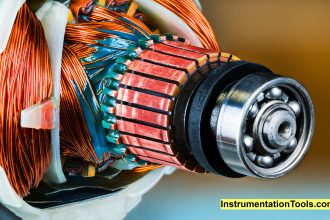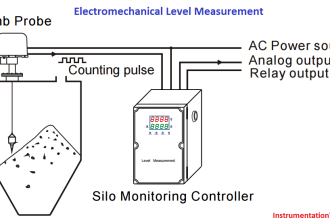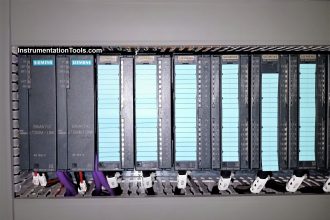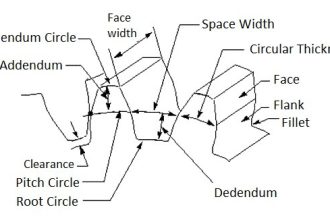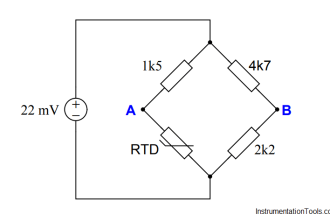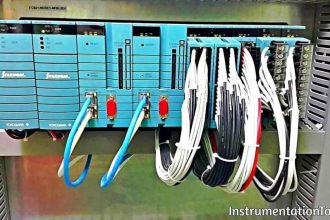Basic ESR Spectrometer
1. Given below is the diagram of Klystron tube. Identify the component.
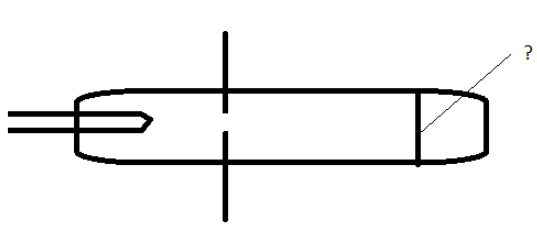
a) Cathode
b) Anode
c) Grid
d) Reflector electrode
Answer: d
Explanation: The component is the reflector electrode. Cathode is on the left side and anode is in the middle.
2. Microwave frequency can be tuned over a small range by adjusting the distance between which of the following?
a) Cathode and anode
b) Anode and the reflector
c) Cathode and the reflector
d) Cathode and grid
Answer: c
Explanation: Microwave frequency can be tuned over a small range by adjusting the distance between anode and the reflector. Reflector voltage can also be adjusted.
3. Microwaves are generated by __________ and the power level is adjusted with the ________
a) Triode, rectifier
b) Pentode, attenuator
c) Klystron tube, attenuator
d) Diode, rectifier
Answer: c
Explanation: Microwaves are generated by klystron tube and the power level is adjusted with the attenuator. Klystron tube is a low power device.
4. Which of the following is also known as reflex oscillator?
a) Triode
b) Pentode
c) Special tube
d) Klystron tube
Answer: d
Explanation: Klystron tube is also known as the reflex oscillator. It is a low power device.
5. Microwaves reflected back from the cavity are routed to which of the following?
a) Attenuator
b) Klystron
c) Load
d) Diode detector
Answer: d
Explanation: Microwaves reflected back from the cavity are routed to diode detector. Power reflected from diode is absorbed by load.
6. Which of the following routes the microwaves entering from the klystron towards the cavity?
a) Oscillator
b) Attenuator
c) Circulator
d) Reflector
Answer: c
Explanation: Circulator routes the microwaves entering from the klystron towards the cavity. The sample is mounted in the cavity.
7. By introducing which of the following, signal-to- noise ratio can be improved?
a) Small amplitude field modulation
b) Large amplitude field modulation
c) Small amplitude field attenuation
d) Large amplitude field attenuation
Answer: a
Explanation: By introducing small amplitude field modulation, signal-to- noise ratio can be improved. This is because the previous DC measurement is too noisy.
8. Which of the following is adjusted as a fine control for frequency tuning?
a) Cathode
b) Anode
c) Reflector voltage
d) Grid
Answer: c
Explanation: Reflector voltage is adjusted as a fine control for frequency tuning. Distance is the coarse frequency adjustment.
9. In basic ESR spectrometer, the cavity length is adjustable.
a) True
b) False
Answer: b
Explanation: In basic ESR spectrometer, the cavity length is not adjustable. It is of one wavelength.
10. The cavity resonant frequency should be equal to which of the following?
a) Frequency of electric field
b) Klystron frequency
c) Frequency of magnetic field
d) Mechanical frequency
Answer: b
Explanation: The cavity resonant frequency should be equal to klystron frequency. It must be tuned in this manner.
11. When klystron frequency is close to the cavity resonant frequency, much less power is reflected from the cavity to the diode.
a) True
b) False
Answer: a
Explanation: When klystron frequency is close to the cavity resonant frequency, much less power is reflected from the cavity to the diode. It results in a dip in a power mode.
12. From which of the following are electrons emitted in the klystron tube?
a) Cathode
b) Anode
c) Grid
d) Reflector electrode
Answer: a
Explanation: The electrons are emitted by the cathode in the klystron tube. The cathode is heated.
13. Which of the following is the operating frequency of the ESR spectrometer?
a) 1.7 to 3.4 GHz
b) 1.5 to 4.2 GHz
c) 3.2 to 5.4 GHz
d) 8.8 to 9.6 GHz
Answer: d
Explanation: The operating frequency of the ESR spectrometer is 8.8 to 9.6 GHz. It is an important parameter.
14. At which of the following frequencies is the magnetic field at the sample modulated?
a) 1 kHz
b) 10 kHz
c) 100 kHz
d) 1000 kHz
Answer: c
Explanation: The magnetic field at the sample is modulated at 100 kHz. The magnetic field is kept at maximum.
15. The output of the klystron does not pass through which of the following?
a) Isolator
b) Reflector
c) Power leveller
d) Directional coupler
Answer: b
Explanation: The reflector is inside the klystron tube. The output passes through the other three components.








